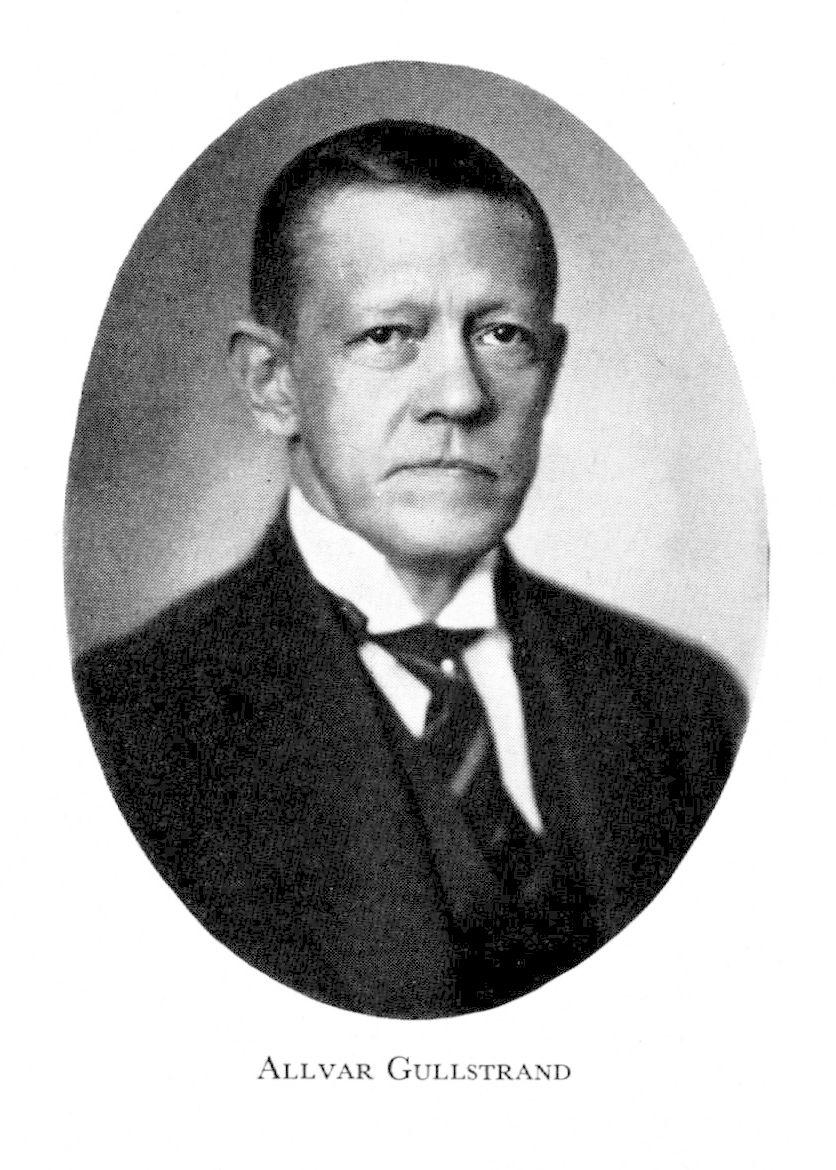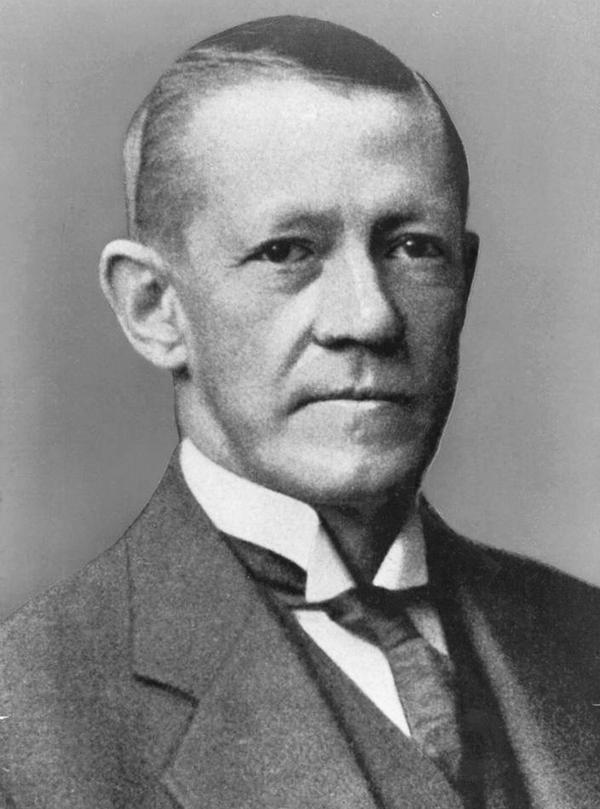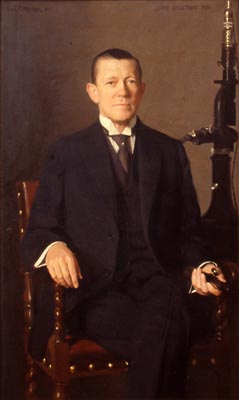Allvar Gullstrand
Allvar Gullstrand ( pronunciation: [ ˌ al ː ː vaɹ gɵl stɹand ], born June 5, 1862 in Landskrona, † July 28, 1930 in Stockholm) was a Swedish physician and received the Nobel Prize in Physiology or Medicine 1911.
Life
Allvar Gullstrand was born in the southern Swedish port of Landskrona, the son of the medical officer Pehr Alfred Gullstrand and his wife Sofia. He studied from 1880 to 1888 at the University of Uppsala, 1885 for one year at the University of Vienna. After receiving his doctorate in 1890 he was a lecturer in ophthalmology. 1894 to 1913 he was the first professor of ophthalmology at the University of Uppsala. In 1911 he was awarded the Nobel Prize in Medicine " for his work on the optical properties of the eye". In 1914 he was awarded a named professorship for physical and physiological optics at the University of Uppsala, which he held until his retirement in 1927.
Allvar Gullstrand married in 1885 Signe Christina Breitholtz. They had a daughter, but died very early.
In 1904 he became a member of the Royal Society of Sciences in Uppsala, 1905, the Royal Swedish Academy of Sciences, 1917, the Kungliga Vetenskaps -och Vitterhetssamhället i Göteborg.
Work
Allvar Gullstrand mainly dealt with the optical properties of the eye, an area which he taught himself for the most part. The basis of his work he put in 1890 with a publication about the astigmatism and in subsequent publications on other eye defects. Special recognition found his fundamental work on the optical imaging in the eye and the properties of the lens in the eye of man ( 1900), more fundamental work on physiological optics followed. This spanned from studies of the paralysis of eye muscles via the Hornhautrefraktion up for coloring the macula centralis in the retina ( retina). Most of these publications received quality awards.
Gullstrand also worked on fundamental physical questions for imaging and refraction of light on optical devices and also developed some important devices for ophthalmology.
He also led the Gullstrand equation ago (or Gullstrand'sche formula ).
Where ...
Dges the total refractive power of the eye system indicates ( 58.64 diopters ).
D1, the first refractive system ( cornea) describes ( 43,05 dpt ).
D2 the second refractive system (lens) describes ( 19,11 dpt ).
D is the distance between the optical media in indicating meters (for example, center thickness of the lens).
N is the refractive index of the optical medium btw the systems indicates ( aqueous humor n = 1,336 ) ( n air = 1).
As a member of the Nobel Committee, he was primarily responsible for ensuring that Albert Einstein did not get the Nobel Prize for the theory of relativity, the Gullstrand refused. He tried to develop his own theory, and resulted in this context about the same time Paul Painlevé Gullstrand - Painlevé coordinates for the Schwarzschild solution of general relativity, which at an early stage and before the Kruskal- Szekeres coordinates from the mid-1950s the unphysical nature of the singularity of the Schwarzschild coordinates on the Schwarzschild radius showed. Einstein finally received for 1921 but still the Nobel Prize (awarded in 1922 ) after the physicist Carl Wilhelm Oseen came to the Nobel Committee and sat Einstein Award for the photoelectric effect by skilful action. He was friends with Gullstrand and linked the price for Einstein, who was called for many years by leading physicists, with a ceremony to Niels Bohr.










